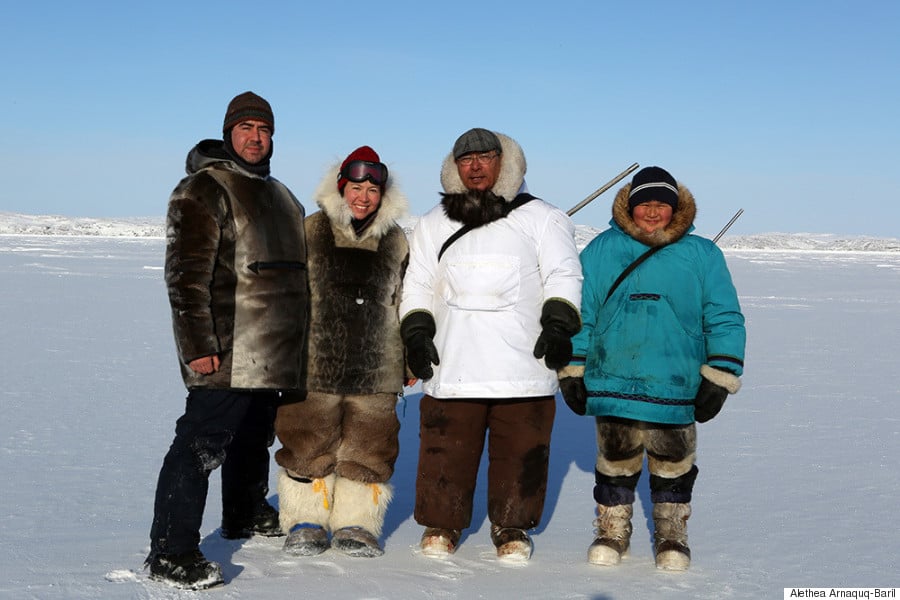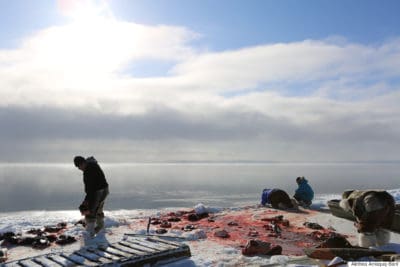
Since the Green Peace anti-seal hunting campaign came out in full force in Canada in the 1970’s, the Inuit way of life has been impacted severely. While the campaign was aimed at commercial sealing, the price of seal pelt dropped so drastically that the entire Inuit community was at a complete loss. The 1983 ban on importation of the baby white seal pelt is known among Inuits as “The Great Depression”, in which livelihoods were so severely impacted that suicide rates skyrocketed.
Earlier this November, there was a motion in Canada to establish a “National Seal Products Day”, to which Green Party Leader Elizabeth May was opposed.
Yvonne Jones, an Inuk MP for Labrador, described the bill as “an opportunity for us to reflect upon the seal, the cultural use of the seal, the sustainability of the seal in our lives, and how it maintains its strength for Canadians as source of food, as source for crafts, and as a source of economic sustainability in many regions across the country.”
ANTI-FUR MOVEMENTS IN THE 1970S

Major anti-fur movements in the 1970’s, pushed by Green Peace and heavily endorsed by celebrities such as Brigitte Bardot, put thousands of Inuit people suddenly into poverty. Even though the Inuit people had never hunted the baby white seal, the entire seal industry was lost. The average Inuit seal hunter’s income went from $54,000 a year to about $1,000. The villages lost about 60% of their income, with no viable replacement.
Former cabinet minister David Kilgour wrote that in the Northwest Territory, the amount of pelts sold went from 44,000 to 8,000 in a single year.
Recently, an independent film called the Angry Inuk, directed by Alethea Arnaquq-Baril, features 8 years work interviewing Inuit hunters to help outsiders understand their way of life. ‘Angry Inuk’ hopes to inspire people to open a dialogue in Canada about the lives impacted by this campaign.
Aranquq-Baril stated that “if Ontarians are allowed to farm and raise cows and chickens and eat them as well as sell their products why shouldn’t Inuit be able to do that with our local animals?”
GREEN PEACE RESPONDS
In 2014, Green Peace Executive Director Joanna Kerr made a public apology to the Inuit people. She claimed that their campaign was aimed specifically at the commercial sealing industry, not the “small-scale, subsistence hunting carried out by the North Indigenous and coastal people.” She stated that “the consequences, though unintentional, were far-reaching”.
“The federal government often tried to include small-scale Indigenous hunts in their communications, selectively addressing issues and manufacturing content that roped everyone into the same basket. But the differences are stark, with perhaps the most important one being the relationship that Indigenous Peoples have with the animals they hunt for food, clothing and cultural purposes. They take only what they need, and no more. They honour the animals, the land and the ocean. This special relationship has existed since time immemorial, and Greenpeace respects and honours this Indigenous knowledge and those relationships.”
CAN THE INUIT PEOPLE SURVIVE WITHOUT SEALING?
According to Harpseals.org, who self-identify as a “grassroots charitable organization with a worldwide reach”, say that the Inuits have been offered alternatives to seal hunting in the past.
When asked about alternatives, they state that “sealers earn most (about 95%) of their living as fishermen. As they deplete the oceans by over-fishing, destroying habitat with bottom trawlers, and indiscriminately killing sea life with long liners and other fishing technologies, their income from fishing is likely to decline. Sealing never has offered a lucrative alternative or supplement to the fishermen’s income. Most of the proceeds from sealing go to boat captains and seal skin processors.”
Captain Paul Watson of the Sea Shepard Conservation Society has also attempted to introduce “seal brushing” in which seal pelts are brushed and harvested. The efforts were repeatedly introduced and denied, and the organizations even went as far as to find a businessman who offered more money for each brushed seal than the sealers could make from the pelt. Another alternative would be to introduce tourism to the area. All alternatives have been continuously rejected.
The Humane Society has also pointed out that the government has already provided over $20 million in subsidies to seal hunters, compensating them for their loss of livelihoods.
“Over $4 billion has been spent on Canada’s east coast on buyouts and alternative economic development plans in recent years. When Canada ended its commercial whale hunt, it compensated whale hunters for their licenses in a similar fashion. One potential industry for the federal government to develop in place of seal hunting is marine ecotourism, including seal watching. In the Magdalen Islands, one of Canada’s sealing areas, seal watching now brings in more money to local communities than seal hunting does.”
Is this a case of a stubborn community refusing to adapt, or the story of a strong-willed people struggling to survive?
What are your thoughts? Please comment below and share this news!
This article (Inuit Seal Hunters Lash Out At Green Peace For Anti-Hunting Campaign) is free and open source. You have permission to republish this article under a Creative Commons license with attribution to the author and TrueActivist.com


